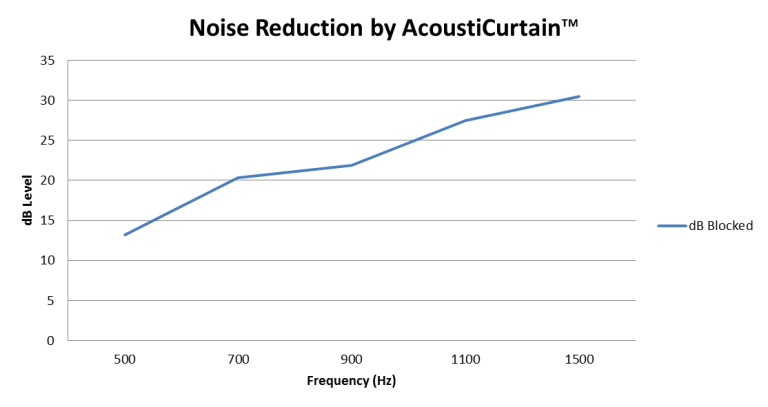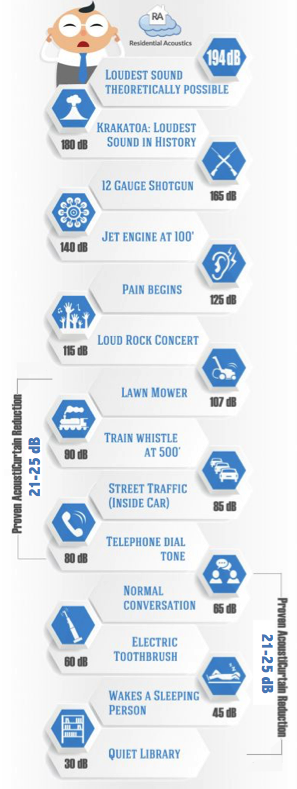No products in the cart.
Soundproof Curtains Designed from Scientific Research on Acoustics
All of our acoustic soundproofing products including the Soundproofing Curtains, AcousticCurtain, Retractable Soundproof Drape, AcoustiTrac and Sound-blocking Door Panel, AcoustiDoor have been developed from research on sound, acoustics and the scientific principles that have driven sound-proofing in your home or office and construction and entertainment industries for decades. It’s been shown that reduced noise levels increase sleep quality and quality of life. Our products are designed to meet the standards set by the National Sleep Foundation, which has shown that sleep is dramatically increased when background noise is reduced to 30-40dB–decibel or unit used for measuring sound intensity–and a result from research on sound-blocking, acoustic materials and sound absorptions.
Sound-blocking Research for Curtains
Our sound-blocking research has detailed the ability to reflect, refract, and absorb sound through portals in commercial and residential construction. Our team of engineers has studied acoustical phenomena, and performed a number of trade studies to minimize the cost required to construct a product that will effectively reduce noise through a window or door by 60%-80%. This noise attenuation is accomplished by layering specialized acoustic materials that separately absorb and reflect the sound, preventing it from passing into the “quiet zone” that you want protected.
Soundproof curtains should be placed over doors and windows that have low STC ratings. This is either because they are too light, such as hollow-core doors and single-pane windows, or because they allow too much flanking, such as doors with large thresholds or windows that are “drafty”. Soundproof curtains are used to hang over these openings, fixing both problems at once. They seal around the edges to prevent flanking, and they add significant mass to the door or window, minimizing sound passing directly through them!
Acoustics Materials Research
The materials we use range from hard, dense polymer material to bounce waves back, and soft, porous material that captures the sound like a cave tunnel, and bounces it internally until it slowly dissipates. Our fabrication methods were focused on allowing a very simple installation and disassembly (if preferred).
Sound Absorption
STC (Sound Transmission Classification): This is a measure of the sound blocked from entering the room. It is calculated by measuring how many decibels are reduced at different frequencies. See our results below!
NRC (Noise Reduction Coefficient): This is a measure of how much sound is absorbed. Our sound-absorbing exterior layers soak up sound that does get in, or is generated within the room, so that it does not echo or reverberate within.
Figure 1: Transmission Loss per Octave for Soundproof Curtains – STC 21
[INFOGRAPHIC] How much noise reduction is this? Check out the dB Infographic to give you the context.
Questions, Comments, or Need More Information?
Residential questions or comments about acoustic soundproofing in a home, please contact Residential Acoustics.
Commercial constructions questions about a soundproofing project or for more information about our commercial acoustic consulting services, please contact Commercial Acoustics



